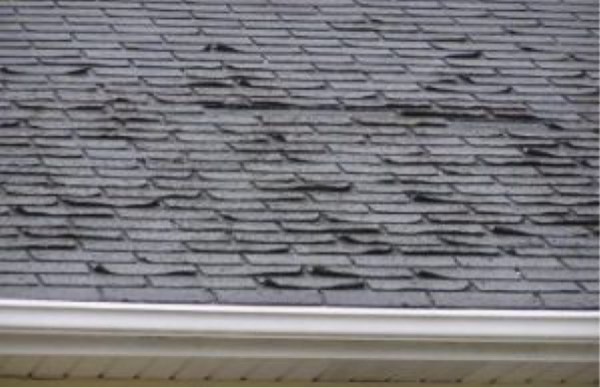When It's Time to Replace a Roof (And How to Tell)
Living in the Triangle Area means you endure heat waves, cold spells, hail storms and maybe even a hurricane or two. While you can seek shelter when necessary, your home has to stand strong. Since you get your share of local weather incidents — some would claim you get more than its fair share — your roof may be weathering quicker than you realize.
A healthy roof is an extremely vital component of your home. But it can be an expensive proposition to replace. Whether you’re prepared for the expense when the time comes to replace a roof or you’re taken off guard by a sudden housing emergency, replacing your roof isn’t something you can put off for long without risking more serious water, wind and other environmental damage.

Learn to Look for Telltale Signs
Before you get inundated with water stains on your ceiling or find your home flooded, you can take steps to ensure the viability of your roof. Ideally, you can schedule regular maintenance checks by a reputable roofing company like the Triangle’s Trusted Roofing Company.
If you’re more of a DIY homeowner, regularly check your roof for signs of potential damage. Four times a year, when the seasons change, get outside on a clear day and look for signs that your roof is aging or damaged. Don’t wait until you have to replace a roof; call in an expert if you notice:
- Your roof looks like it’s sagging. A sagging roof means that your home may have structural issues that new shingles alone can’t repair. Call Triangle’s Trusted Roofing Company at 919-770-9089 for an inspection soon! Ryan Reinalda and his trained crew give you an honest assessment about whether you should replace a roof.
- You see holes in the roof of your attic. If you have access to an unfinished attic, like many homes in the Triangle area, check it consistently. Any hole you find — where you can see the sky — translates into an active leak and requires immediate attention. Depending on the damage and the age of your roof, you may need a complete roof replacement.
- You find mold damage or dark spots in your attic. While you’re in the attic, check for moisture stains or evidence of mold. Attics that aren’t properly ventilated create a perfect storm of heat, moisture and bacteria that can destroy your roof from the inside out. If you find any mold, don’t investigate it yourself, as it may be highly toxic. Call in an expert!
- Your shingles aren’t lying flat. If shingles are curling up at the edges or in the middle — especially if they’re grouped in one area — your roof has as little as a year or up to five years before you must replace a roof for your best interests. Plus, the curled edges make it easier for wind to blow the shingles off your roof, exposing your home to other weather extremes.
- You notice missing or visibly cracked shingles. Missing or cracked roofing shingles may not mean you have to replace your entire roof. But your insurance company may pay you to replace it. Consider this an opportunity to recoup some of those premiums you have been sending their way. Or, you can repair your roof, replacing just those wind-damaged or cracked shingles. But be warned: the new shingles may stand out. Matching the exact color of your older, weathered shingle may be impossible.
- Some shingles have been infested with algae or moss. This is usually a cosmetic issue only, meaning it may not impact the life expectancy of your roof. But if you want to clean up your look or if the moss is actively lifting your shingles, you can opt for a repair that replaces just those affected shingles. Unless it’s all over your roof, you may not need to replace a roof entirely.
- Your shingles are “shedding.” Residential roofing shingles include granules that do more than give the shingles texture. These granules absorb a lot of heat. If that protective material burns or blows off aging shingles, you may find it in your gutters. Without granular protection, your shingles deteriorate faster.
- You’ve seen icicles form over your gutter. These icicles form “ice dams” that can force your shingles to separate, allowing the water from the melting ice to get into your house. If you notice wintertime leaks, especially after a freeze, this may be your problem, which can lead you to have to prematurely replace a roof, when an earlier intervention repair could have prevented problems.
time to replace a roof roofing raleigh nc healthy roof raleigh roofing company saggin roof holes in the roof raleigh roofers mold damage hail damage roof repair replace a roof cracked shingles roofing cary nc protective material icicles roof



